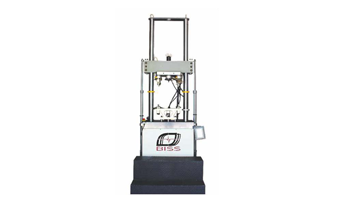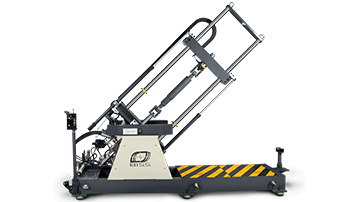
- Home
- Products
Systems
Accessories
- Grips And Fixtures
- Actuators
- Applications
BY Material
By Test Methods
- Our Company
- News
- Blog
- Support
- Media Centre |||
Shock Absorber Test Systems
Shock absorber manufacturers are conscious about the need to ensure that manufactured parts conform to required specifications. Over two million tests are performed every month on over a hundred BISS shock absorber test stations with practically all globally reputed manufacturers. Some of these systems are more than twenty years old and have seen over 50,000 hours of operation. Production testing involves a cycle time of just 7 to 20 seconds and leaves no time to ensure proper alignment of the part. BISS R&D was able to come up with gripping arrangement that are self aligning by design and principle of operation ...
DFT systems, produced by BISS, are being widely used in automotive industries especially those manufacturing shock absorbers for vehicle (motor bikes, cars, buses, trucks, trains etc) suspensions. These shock absorbers, using DFT systems, are typically tested for their performance, durability and quality check. The BISS make DFT systems are typically classified based on: the stations (single station or dual station); the plants (production or R&D); the application (performance, durability, quality check); the drives (servo-hydraulic, slider-crank driven, electromagnetic); the orientation (tilting system / non-tilting system); the grips (manual, automatic); speed (low speed up to 1.0 m/s; high speed up to 6.0m/s); the mobility: (stationary and mobile).
The typical common unique selling features of these systems are as follows:
Irrespective of the wide classification, the control hardware and software used for these systems remain same keeping customized software for the application. This leads to optimized user-friendliness for operation, maintenance and technical support.
Automatic calibration of force and displacement sensors.
Linear encoders for displacement measurement and control.
This facilitates real-time computation of velocity and accelerations without need of additional sensors.
Real-time compensation for inertial load components in the measured force from loadcell.
Real-time correction for velocity from measured acceleration obtained from an accelerometer.
Qualification of shock absorbers by measuring and processing mechanical noise (sound) produced by them.
Qualification of shock absorbers based on loop tolerance band instead of just extreme values of force and displacement measurements.
Single sine test of peak velocity to extract damping force values for various intermediate velocities.
Compensation for gas-force and friction-force in the measured force from the load cell in order to estimate effective damping force.
Shock absorber force vs. displacement\velocity loop analysis and statistical data analysis tools.
Online adaptive control to produce high fidelity force vs. displacement\velocity loop.
Contamination insensitive servo valves for servo hydraulic DFT systems
Energy-efficient power packs for servo hydraulic DFT systems.







